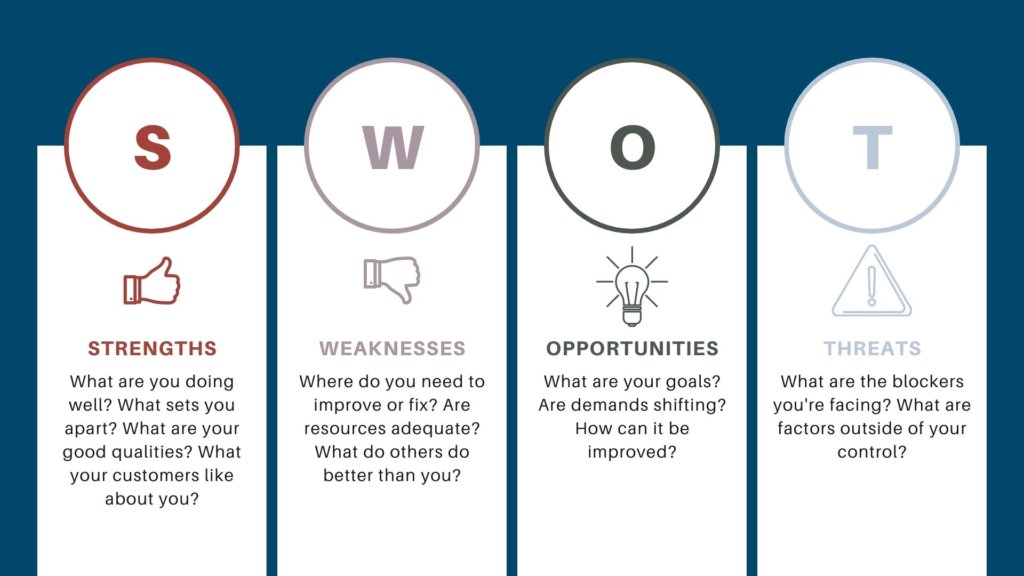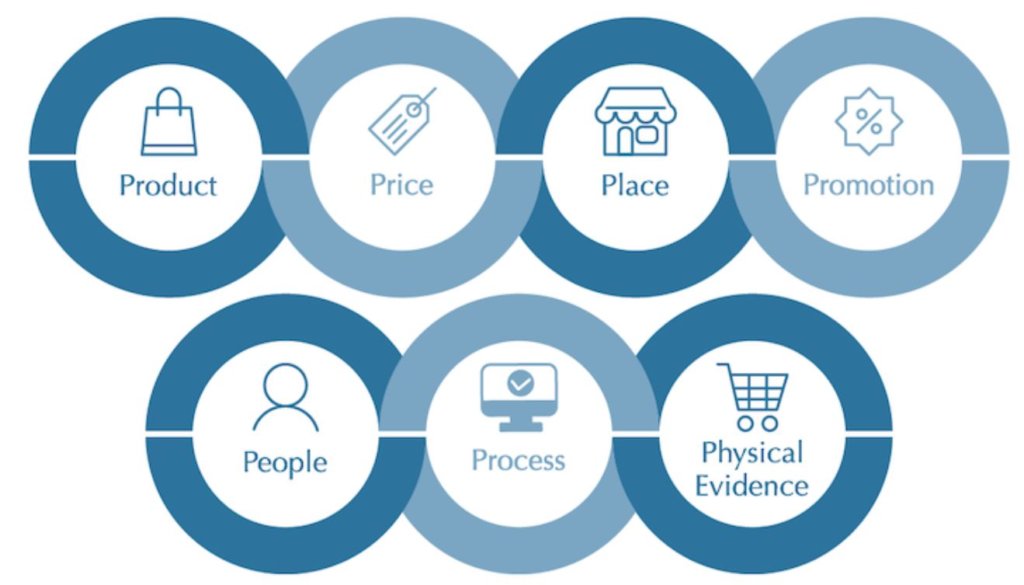As Benjamin Franklin once famously said, “If you fail to plan, you are planning to fail.” Obviously, this quote applies to many things, and nowhere is it more relevant than with a marketing plan. So often businesses talk about ‘doing marketing’, but a plan for marketing is just as important as planning for all other functions of your business. Without a marketing strategy, marketing plan or roadmap, you can’t measure your performance and without measurements you can’t improve results and ROI.
Every blog and how-to book you read will have a different take on the essential elements of a ‘kick-ass’ marketing plan. Big corporates are likely to go for the full bells and whistles approach, whereas smaller businesses tend to streamline the process and create something that is perhaps more accessible in its language and approach. Quite often the process you go to, to create the plan is as important as the final plan itself.
If you fail to plan, you are planning to fail
Benjamin Franklin
These days, marketing budgets are being squeezed more than ever. Businesses are demanding more from their marketing activities, but with smaller budgets and fewer resources. How to achieve more, with less, but marketers are resilient, nimble and creative and used to adapting and being agile. The trick is to put effort and focus into what will deliver the best results for the business, which is a fine balance between art and science and data too!
Marketing success – make it happen!
Marketers, along with other areas of the business need to prove return on investment (ROI), which means measurements and metrics and a view of what success looks like. A successful marketing plan will address your key business challenges and help you delivery your business goals. Its instrumental in helping you achieve higher performance.
Creating a marketing plan can be challenging, and far too frequently, the time and effort put in to creating your plan is abandoned or wasted due to reactive and last-minute tactics from the business. Here are 5 the key ingredients to a creating a successful marketing plan. Of course, success will only come from implementation and execution.

The approach for marketing plan success
Marketing plans need to be created with a clear understanding that uncertainty is likely to continue. What may have been the norm in 2019 is not the norm in 2021. The best plans have flexibility, agility and contingency built in. In other words, plan for the unknown and constant change.
Try selecting and removing or editing the caption, now you don’t have to be careful about selecting the image or other text by mistake and ruining the presentation.
1. Where are we now?
This might seem a little obvious, but a good plan starts with asking ‘where are we now?’. Often referred to as the situational analysis. This is just as much about your business as it is about understanding your customers. They are being confronted with the same external and environmental challenges as you, and they may have been adjusting.
This is where a good old-fashioned SWOT is worth doing? A SWOT of your current activities – strengths, weaknesses, opportunities and threats in terms of your competitive position in the market, your target markets, your target audiences, channels and partners etc.

2. Where do we want to get too? What does success look like?
These are your goals and should reflect 12 months as well as quarterly and monthly. Ultimately you want your marketing activities to deliver a consistent flow of high quality leads and help drive sales opportunities that convert to revenue.
The best way to achieve this is to use a ‘smart’ marketing approach that builds a marketing strategy and execution plan aligned to your business goals using your discovery from your SWOT.
Your goals should be of a broader nature, but your objectives should be SMART (Specific, Measurable, Attainable, Realistic, Time-based). Something you may be using already, but it’s a good reminder and great way to keep you on track and remain accountable.
Your SMART objectives might be:
- Secure 10 leads through digital marketing efforts
- The sales forecast; sales figures, number of new clients or new logos you want to achieve
- Increase self-drive lead generation to XX through improvements to your website
- Communication with existing clients every 3 months?
- Increase time spent by visitors to website by xx%
- Deliver xx pieces of content each month for website and email marketing

3. Define your target audience and personas
You probably have a good idea about the profile of your most valuable prospects and the sales process you use to convert them. However a lot of things may have changed including your ideal target audience. Its a great opportunity to attract a new audience which you may have spotted in your SWOT.
You probably know your target audience at a high level, but its valuable to dig into the detail a little further to try and understand each prospect’s unique situation, as this will highlight that a single approach and message may not be appropriate. Customise your approach by creating buyer personas.
Buyer personas are fictional representations of your target customers based on criteria or attributes such as demographic data, online behaviour, age, education, interests, education, motivations and concerns, to name a few. More importantly than ever, is to understand the challenges your buyers are experiencing. Taking this approach puts your potential customer first – front and centre. Let your customers guide your marketing priorities
4. Strategy
Your strategy supports your reasoning, tactics and approach and justifies your marketing budget. This is where you define in you plan you solve the challenges and meet your objectives. What activities and actions will you undertake to get your product and service and message in front of your target audience. How will you help solve their problem, having identified that earlier. Your strategy will drive messaging, the channels you select to use, digital and social media etc. Check out tips for your Marketing Strategy.
This where marketers tend to us the 7 P’s of marketing model or the marketing mix – what you need to put into the mix to deliver the results.

Product
- Describe your products or services and how will you enter the target markets defined earlier
- How will this product/service solve the challenges of you buyer based on your persona descriptions?
- What makes this product/service different from your competitors?
Price
- How much are you selling this product/service for? What is your pricing model?
- Are you competitive? Or do you need to articulate value delivered
- Is the pricing realistic for your target audience’s budget
- Is there any seasonality?
Promotion
- How will you promote?
- What channels will you use beyond website, blogs and social media
- What sort of content do you need to create that will drive value for your product/service
- Client case studies and testimonials, testimonial video?
People
- Who do you need in terms of resources? Need any additional or external support?
- Role of marketing team
- Define the team and their roles
- Who will create content, design etc?
- Who do you need to be successful?
Place
This signifies where you choose to distribute your product/service. These days the lines have become more blurred when it comes to place as retailers are now online etc. But you need to define where and how.
Process
- How will the product/service be delivered?
- Is it an ongoing service or a licence
- How will you provide customer support and service?
- How will you support your product?
Physical Evidence
- Where is your product displayed and how is it displayed?
- If its software or an intangible product how do you demonstrate and show?
- Is packaging and branding needed?
5. Plan of action and tactics
A beautiful plan is worthless unless its put into action. This is where the magic happens, so make sure you create a detailed Action Plan that include more detail and allocates resources and owners of deliverables. A great action plan becomes ‘work instructions’ for different people. The more detail provided the more likely you will see success – avoid ambiguity.
Establish time frames and set long- and short-term milestones to make sure you keep on track and however else is involved has a clear view of the big picture and who is doing what. Set deadlines too along with ownership.
6. Review and measure
If you can’t measure it, you cant improve it. Make sure that you have measurements in place so that you can review, measure, adjust and repeat or renew. Without measurement you won’t know if you’ve hit your goals or the targets you need to hit to meet your goals.
So many amazing plans fail, because measurements were not put in place. Hubspot research suggests that 40% of marketers say proving marketing ROI is one of their top challenges. There is no disputing the need to quantify ROI and you cant prove ROI if you aren’t measuring results. Therefore, be sure to set key performance indicators (KPIs) to track the key metrics.
ROI is an ongoing exercise and to meet your goals and objectives you should be constantly analyzing your efforts, understanding what’s working and why as well as what’s not working so well. Adjust where needed.
Creating a successful marketing plan that delivers is more complicated than it seems, its more than just ‘doing marketing’ to make sure you put your valuable resources and efforts into what’s going to deliver the results you want. Your plan should be revisited and updated. Plan of being flexible and adjusting to the business needs.
If you’re looking for some help building, creating or executing your marketing plans, please get in touch.





